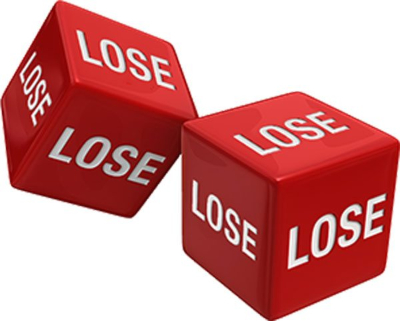How To Plan To Be Productive: 5 Steps To Doing What Matters Each Day
Sometimes you get to the end of the day and say “I didn’t get anything done that I wanted to get done today!” Sometimes that’s unavoidable. Life happens. But I’d argue that most of the time, it IS avoidable.
To be as productive as you can be, you can’t just work your way down a list of to-dos and cross them off. While that might feel productive, it isn’t if you aren’t actually doing the right things. What are the “right” things? That’s what I’m going to talk about in this post.
Doing things other than those may feel productive in the short-term. But soon you’ll realize you did all that work and you’re not that much closer to what you were hoping to accomplish.
Therefore, a big part of this whole process of being more productive isn’t found just in the tasks you’re doing and how you organize them. It’s found in the quality of your project list and actions as it relates to the outcomes you’re hoping for. To be productive, you can’t just fill your project list with anything. They have to be things that will actually deliver the outcomes that you’re shooting for.
This is true productivity.
If you just accomplish a bunch of stuff, but the outcomes aren’t achieved, how productive were you really?
So, the key to maximum productivity is focusing in on the outcomes you desire first, then creating the ideas you believe will create the maximum value toward reaching those desired outcomes with a minimal expenditure of effort.
Making Your Tasks Productive By Planning
But wait, there’s more!
There’s another problem. Not only could you choose the wrong projects, but you could also choose the wrong outcomes. If the outcome isn’t what is truly desired in the first place, then what you do about them will certainly be wrong. It’d be like driving east to get to New York when you actually should be ending up in Los Angeles.
In fact, David Allen points out in his book Getting Things Done that there aren’t just these two steps (making goals and then coming up with ideas to get there), but five steps to accomplishing any task that’s truly productive.
Each of the steps are interrelated. If you’re off on any one of them, you won’t be as productive as you could be.
These steps help us to better understand why we get stuck in our productivity processes. If we feel de-motivated at any of the steps, it’s because we either don’t have the prior step figured out yet, or we’ve lost focus of it.
What this comes down to is planning. This is what maximum productivity requires. It requires thinking through why you’re doing something, what you hope to accomplish, what it will take to get you there, and how you’re going to execute. As you practice this, it will start to feel like your project and to-do lists basically build themselves.
Let’s take a look at the thinking steps we have to go through to accomplish virtually any task and some examples of thinking through the process…
Defining purpose and principles
With this, you’re starting with the foundation. Ask yourself “why am I doing this?“
If you’re raising a child, why did you have that child and why are you committing to raising it? You may answer “To build a loving, healthy family.” That’s your purpose.
Your principles are the pillars of behavior built on the foundation of your purpose that support what you should be choosing to do. If you want to build a loving, healthy family, what does that look like in real life? How do you define that?
One principle you may develop is “Raising a child in a way that builds a loving, healthy family means I train them to be unselfish and put others before themselves.”
Envisioning outcomes
This step involves fleshing out what you’re specifically trying to accomplish. It helps if you use the phrase “wouldn’t it be great if…“
For raising your child, an outcome you’d envision might be “wouldn’t it be great if my child didn’t whine every time they didn’t get what they want” or “wouldn’t it be great if they learned not to forcefully take toys from other kids.”
Brainstorming
After you envision an outcome, there’s going to be a gap between where you are right now and that outcome. It’s going to require ideas that you think will help you get to the goal. This is where having a good system for capturing ideas comes into play, because you don’t want to be caught off guard when you have a good one. If you capture it, you won’t have to think of it again later.
One thing to remember when you’re brainstorming is to not judge your ideas right off the bat. The more ideas you capture, the more there is to choose from. The more there is to choose from, the better chance the ideas you decide to act on are good ones.
This step may require some research, as it’s entirely possible you don’t know off-hand of any good ideas of how to get from here to the goal. Or maybe you think someone else might have better ideas. Think about the parent whose child is out of control and they either let it go on, or they use ineffective techniques like yelling or pandering to the child. If they truly want to raise an unselfish child, they need some training on how to get from here to there.
In your research, maybe you found out that an effective method of dealing with selfish children is to provide a balance of discipline and instruction. So, you decide you should flesh out specifics about how you’re going to instruct your child in different situations and what consequences will have a lasting effect on discouraging the behavior in the future.
Organizing your best ideas
This step involves taking your ideas and sorting and prioritizing them. Some ideas will seem better than others. Based on your research and experience, you get to decide what will have the most impact in getting you closer to the outcomes you’ve set. As you execute on ideas, you’ll learn as you go and make adjustments based on your experience.
Identifying next actions
With this last step, you take your idea you came up with to get to your chosen outcome – “flesh out specifics for how I’m going to instruct and discipline my child when they’re being selfish,” and you decide what your next action will be. Your next actions might look something like this…
- talk to my spouse and get on the same page with our approach based on our purpose, principles and outcomes
- write out some options of what we might say to our child in specific situations where they’re being selfish
- gently and lovingly have a conversation with our child about their selfish habits and what the consequences will be when they choose that behavior
Plans can change everything
Here’s the cool thing about going through this process. As I mentioned in a previous blog post in this series, now you’re not just reacting to a situation. When you react, you’re less likely to do so in a way that gets you to the goal you’re trying to accomplish. In this situation, you’re much more likely to do something like yell as a “persuasion technique,” or give the child a piece of candy if they’ll stop whining about not having a toy. Not having a plan and executing it backfires on you. Now you’re being selfish as a reaction to their selfishness. Lose, lose.
But, if you have a plan, that can change everything. Your next actions are directly tied up the ladder to the outcomes you want to achieve. When you plan, your to-dos increase in quality. You’re not just doing whatever comes to mind. You’re actually thinking and processing through why you’re doing tasks in the first place. The end result is a to-do list full of important stuff that focused on why you’re doing what you’re doing and where you want to end up.
Although I used a family example in these steps, they apply to our professional lives as well. I apply these consistently every day when I take my cue from clients on the outcomes they’re looking for from their PPC campaigns. I use those outcomes and my knowledge of the PPC space to then flesh out the projects I’ll need to do to get me to those outcomes and all the micro-actions that will get me there step by step on a daily basis.
I’m confident that if you put these into practice, you’ll increase your productivity…and your paycheck :).
Working up and down the ladder
The thing about these steps is we’re constantly moving up and down them. Any time we need more clarity for what to do to be productive, we can move up the ladder. If we don’t know what our next action should be, it’s because we haven’t truly fleshed out the steps before it. Once you do, clarity will come.
If more action is needed, you move down the ladder. If nothing is happening, you haven’t fleshed out your next actions by working through the steps.
By incorporated this planning process into your personal and professional lives, you’ll naturally focus more on the things that are going to get you where you want to go, making you a much more productive person and more consistently satisfied in those areas of your life.





